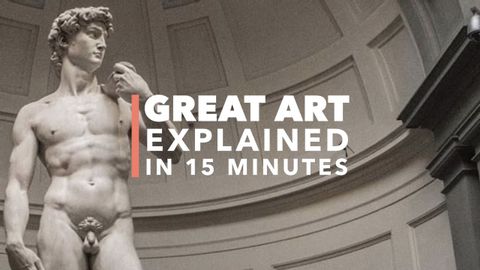Michelangelo's David: Great Art Explained
Caleb Eliel Lara Orellana が 2022 年 05 月 06 日 に投稿  この条件に一致する単語はありません
この条件に一致する単語はありませんUS /ɪˈvɛntʃuəli/
・
UK /ɪˈventʃuəli/
- v.t./i.出場する;計算する;思う;思う
- n.姿 : 体形;数字;人物像;図表;著名人;姿の輪郭;数字
US /ˈfɪzɪkəl/
・
UK /ˈfɪzɪkl/
- n. (c.)身体検査 : 健康診断
- adj.身体の : 肉体の;物質的な;物理的な
- n.体育
US /ˈenʃənt/
・
UK /'eɪnʃənt/
エネルギーを使用
すべての単語を解除
発音・解説・フィルター機能を解除

